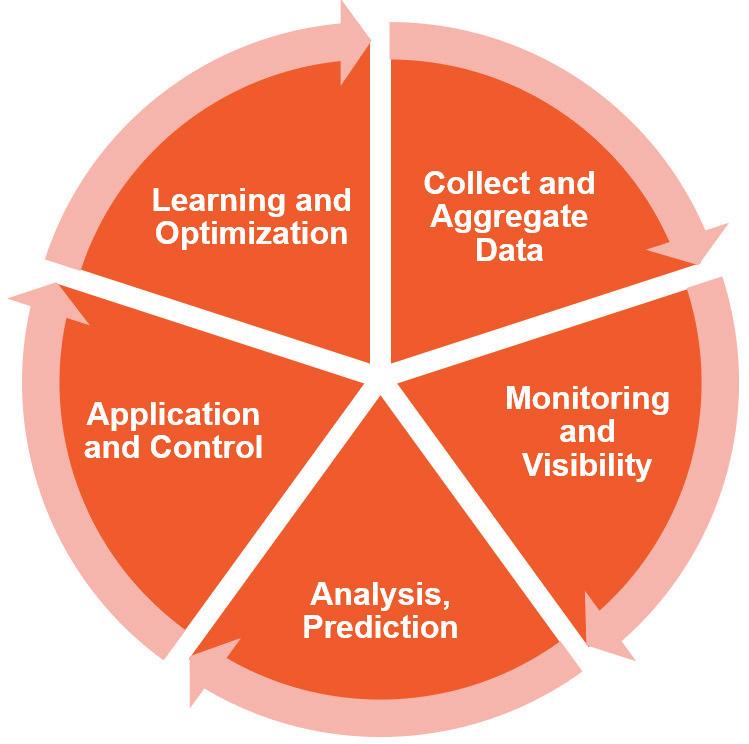The Intelligent Edge: Opportunity and IoT Innovation
By Ed Maguire with assistance from Cate Lawrence, Paul Anderson, Jesse Demesa, Jim Fletcher, and Sandra Mueller
Executive Summary
The concepts around Edge computing are not new but are increasingly relevant as IoT connec ted systems scale and become increasingly autonomous. Interest in, and demand for more power ful real-time data analy tic s fuels interest in an evolving architec tural paradigm that harnesses the advantages of power ful centralized data centers with the nimbleness and
There are technolog y and business reasons driving interest in variants of Edge computing. With often over whelming volumes and velocit y of sensor and endpoint data, it’s neither cost effec tive nor prac tical to rely on centralized data centers for processing and aggregated as it’s generated, with only the most impor tant data sent to the data center for deeper analysis. This approach reduces the costs of data ingestion and network latency.
Edge computing makes sense for business reasons as well. When there’s need for real time responses to sensor data, for instance on a connec ted vehicle, oil well or manufac turing machine, Edge computing enables data to be analyzed and ac ted on in near real time. Edge computing is poised to enable a power ful new Industr y, ultimately powering a broad range of autonomous and self optimizing systems.
We wrote this paper to address the growing interest and curiosit y around Edge computing. We endeavor to provide an over view of technologies.
Intelligent Edge: Oppor tunit y and IoT Innovation
substantial real time insight s ‘under the hood’ from connec ted cars, fac tor y
produces data that provides produc tion managers with previously unobtainable
The more connec ted devices, more data gets collec ted. A s a result, capturing, challenge With the emergence of autonomous vehicles, drones and data intensive industrial automation systems, computing model is not designed to accommodate the extremely low latency demands of real time, high volume analy tic s. in intelligent edge devices gateways and devices that incorporate real time data processing , advanced analy tic s and business logic
There are t wo distinc t but complementar y analy tic
net working and other fac tors. While cloud computing remains foundational for
processed locally in real time.
devices provide real time analy tics and decisioning, while cloud or on premise data centers deliver in depth insights into trends based on analysis of historical data.
Surging Industr y Interest in Edge Computing
There’s growing industr y momentum around Edge computing.In June 2016 Cisco edge of the net work targeting use cases where time is of the essence,but band width is often lacking minesndaniescompashippingies,ctorfaigs,roilsasuch or
The Linux Foundation in April 2017 announced EdgeX Foundr y, an open source projec t to build a common open framework for IoT Edge computing and ecosystem of inter operable component s of industrial IoT Edge computing Later last year, the Industrial Internet Consortium (IIC)
ARC Advisor y Group sur veyed over 3 0 0 end users in 2017 from IIoT industries such as mining , machiner y and automotive, and found that the majorit y of re analy tic s. The primar y reasons for consideration were to improve asset per for considered by many to be the break through application planned downtime.
The Intelligent Edge: Oppor tunit y and IoT Innovation
The Industrial IoT Journey is Still in its Early Stages
can drive fundamental business transformation .
Figure 1: The Analytics Life Cycle; Source: Momenta

This in
volves turning data into insights into actions that drive business optimization. The initial step in the process for IoT analytics is instrumentation of physical assets and processes putting sensors on things to generate data about what they do, and what their conditions are.
Taking a broader view of the opportunity around IoT adoption and maturity,there’s a series of phases as companies undertake their analytics journey Each succes
1. happening in the physical world.
2 .
conditions or potential failures that need to be addressed.
3. pinpoint pending failures or problems, so they may be addressed in advance
4. The most advanced phase is autonomous systems that can self diagnose and guide ac tions to keep systems running seamlessly.
